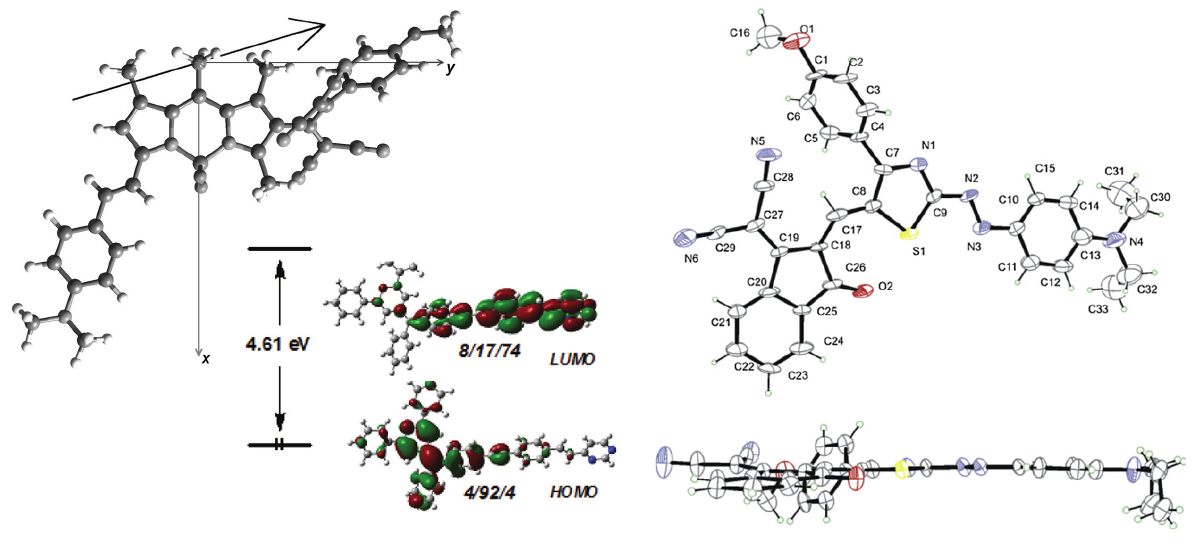The molecular character of organics allows the description of their macroscopic properties through the properties of their microscopic compounds. The understanding of the mechanisms governing the quadratic NLO properties is an important requirement when developing optical devices based on second harmonic generation or electro-optical effects. In particular, a work of optimization of molecular properties is critical for their performance, which is the key to their possible application. Two parameters are of particular importance: their ability to provide a nonlinear response and their ability to be aligned in a specific direction, which allows the individual nonlinear responses to interfere constructively.
Charge transfer molecules (« push-pull molecules »), with electron donor D and electron acceptor A moieties, related through a conjugation path, are highly polarizable and may possess very high quadratic hyperpolarizabilities. The experimental measurement of the product of dipole and hyperpolarizability is performed using an EFISH (Electric Field Induced Second Harmonic) set-up for molecules in solution. The experiment consists in measuring the intensity of the second harmonic as a function of the optical path length in the nonlinear media. The source we employ is a Nd+:YAG laser used as a pump for an OPO or a Raman cell emitting a wavelength at 1907 nm.
We collaborate with several groups of chemists active in the synthesis of new nonlinear chromophores.

